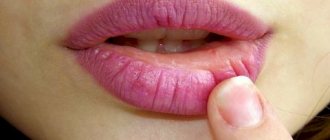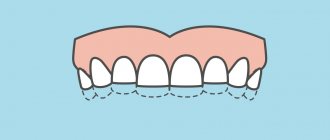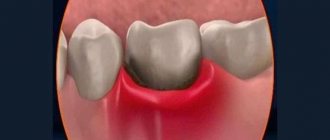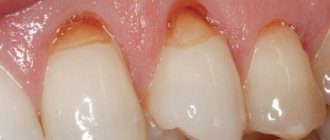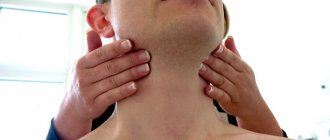Reasons for the development of cheilitis
The main causes of the disease include:
- Dermatoses seem to be the most common cause of cheilitis. Skin diseases such as psoriasis, lupus erythematosus, syphilis, tuberculosis, lichen, also often provoke inflammation of the red border of the lips.
- Thyroid diseases.
- Allergies to various kinds of external factors, professional activities.
- Adverse weather conditions.
- Hereditary predisposition.
- Decreased immunity, gastrointestinal diseases.
Types of cheilitis
All types of cheilitis are divided into two groups:
- symptomatic (cheilitis, as a manifestation of the underlying disease);
- true (as an independent disease).
Types of symptomatic cheilitis and their clinical manifestations
The symptomatic group includes the following types of cheilitis:
- Eczematous - develops against the background of eczema, characterized by redness, swelling, burning and pathological changes in the skin of the lips. If left untreated, it becomes chronic.
- Macrocheilitis - this form of cheilitis is considered a component of Melkersson-Rossolimo-Rosenthal syndrome. There is severe itching and swelling of not only the lip, but also other parts of the face.
- Atopic - a predisposition to allergies to medications and food is a prerequisite for the development of inflammation. It manifests itself as peeling, redness, itching of the skin of the lips, and the formation of cracks in the corners of the mouth.
How to get rid of dry lips at home
Sour cream mask
Mix a teaspoon of lemon juice and sour cream, and also add a little vegetable oil to the mixture. Regularly apply the product to the lips and surrounding area for 20 minutes, then rinse with warm water.
Honey lip massage
Rub a small amount of honey into your lips with light massaging movements or apply it to the corners of your lips if necessary. You can use this mask as often as you want.
Baby cream to help you
Apply a high-quality baby cream to your lips in a thick layer. After 15 minutes, simply blot off any remaining product with a clean napkin.
Vegetable oils for lips
You can also use sea buckthorn, almond, and wheat oils. Such oils are applied to the lips twice a day, and a couple of drops of vitamins A or E are often added to them to enhance the effect.
Types of true cheilitis
True cheilitis includes:
- Contact - manifests itself as a result of the body’s reaction to contact with an irritant: cosmetics (determined mainly in women), the bad habit of holding a pen or pencil in the mouth, professional activity (musicians due to prolonged use of the mouthpiece of a wind instrument) Characterized by redness, itching, feeling burning, swelling of the lips.
- Actinic - involves the development of an inflammatory process as a result of special sensitivity to natural phenomena: sunlight, wind, frost, radiation. It manifests itself as small blisters or erosion, swelling of the red border. This type of cheilitis is also called meteorological.
- Exfoliative - occurs mainly in women. The development of pathology occurs against the background of depression, anxiety, and various disorders of the nervous system. The main symptoms are dryness, severe, prolonged peeling of the lip border. Exfoliative cheilitis has two forms: dry and exudative. With exudative inflammation, crusts form, causing pain in the patient.
- Glandular - occurs against the background of hypertrophy of the minor salivary glands. This phenomenon can be congenital (appears after puberty) or acquired as a result of chronic inflammation. There is a risk of suffering from glandular cheilitis in people with periodontal disease, numerous carious cavities, after lupus erythematosus, and leukoplakia. It is initially characterized by increased dryness, which does not disappear with the use of hygiene products. Later - the presence of cracks due to the constant exposure of saliva to the red border of the lips. 20-30% of patients with glandular cheilitis develop squamous cell carcinoma. It is necessary to take a responsible approach to the treatment of this disease and seek qualified help from doctors in a timely manner - surgical intervention may be required.
Prevention
The main prevention of cheilitis is maintaining a healthy lifestyle and timely treatment of any infectious and allergic diseases. Basic list of measures:
- Eat right - a balanced menu should contain an abundance of fruits, vegetables, herbs, nuts, fish, and high-quality dairy products.
- Reduce the use of cosmetics - try to choose hypoallergenic formulations and constantly monitor the skin's reaction.
- Dose your exposure to open wind or direct sunlight.
- Protect your lip skin from physical and chemical damage.
- Take vitamin and mineral complexes periodically in courses (after consultation with your doctor).
- Give up bad habits.
- Seek medical advice promptly if you have characteristic symptoms.
Remember: your health is the greatest value, and constant monitoring of its condition is very important to maintain the body’s performance, especially in old age.
Treatment of cheilitis
This disease requires special treatment, depending on the cause, type and degree of the inflammatory process. The main methods of treating cheilitis:
- local treatment of the surface of the skin of the lips with disinfectant solutions, ointments, vitamin oil solutions;
- physiotherapeutic methods: Bucca radiation, ultrasound, laser therapy;
- a course of vitamin therapy;
- rinsing the mouth with decoctions of medicinal herbs.
If necessary, to eliminate the causes of the disease, specialized specialists may be involved: a dermatologist, an allergist, an infectious disease specialist.
TOP 5 salon techniques
Women who are faced with dry lip skin sometimes do not know what to do with such a deficiency.
The most effective and fastest results are provided by cosmetic procedures. Here are the most popular ones:
Laser resurfacing
Used quite often. The essence of the method is to eliminate dead skin particles using a laser beam.
Sanding is not for everyone. If there are deep injuries, you will have to heal them first.
Non-injection hydration with hyaluronic acid
The surface of the lips is pre-cleaned. Then a concentrated composition of useful components and vitamins is applied.
Therapeutic substances penetrate deep into tissues using an electroporation apparatus.
The procedure provides complete hydration, improved color, and increased volume. The results obtained will last 2 – 4 months.
After this, you will need to repeat the manipulations. The impact of the unit is carried out under local anesthesia, so pain is not felt.
CONTRAINDICATIONS
- women during pregnancy and breastfeeding;
- people with malignant and benign tumors;
- patients with diabetes mellitus;
- patients with pathologies of the cardiovascular system.
Injection method
To replenish the lack of moisture, special fillers are used. They contain hyaluronic acid and lidocoine, which are necessary for painless injections. This procedure is called contour plastic surgery.
The result is not only hydration, but also enlargement of the lip area. This fact stops many.
But you need to understand that it is not necessary to greatly enlarge your lips, since an experienced doctor can introduce a small amount of fillers, so you will not notice much of a difference in size.
You can also perform lip biorevitalization. This is a procedure during which hyaluronic acid is injected into the skin layers.
In this case, the lips do not change in size, but enormous hydration occurs.
Vitamin complex
A mask enriched with vitamins is applied to the surface of the lips. The composition also includes other substances with beneficial properties:
- fixed oils;
- natural fruit acids;
- nutritional ingredients;
- beeswax.
A pronounced positive result will be visible after the first visit to the cosmetologist’s office.
Collagen mask
Suitable for quickly getting rid of flaking, giving softness and smoothness to the skin. The therapeutic effect of the mask lasts for 5 hours.
However, the procedure cannot be repeated too often. The ideal option would be sessions held twice a week.
Allergic cheilitis
A disease that develops in allergy sufferers upon contact with an allergen and affects the surface of the lips. Typical manifestations of this type of cheilitis are a feeling of itching and burning on the lips, dryness and significant discomfort. The lips begin to dry and peel, and the scales of dead epithelium begin to flake off.
The main cause of this disease is the patient’s increased sensitivity to external irritants, in particular to allergens. Allergic, or, as it is also called, contact cheilitis can develop gradually.
It all depends on the patient’s personal sensitivity to allergens, and it can develop over several weeks, months and even years. The duration of this process is determined by the peculiarities of the endocrine system, as well as the degree of manifestation of allergic reactions.
This disease practically does not appear in children. According to statistics, most patients with allergic cheilitis are women over twenty years of age.
Causes of the disease
In most cases, allergic cheilitis is caused by contact allergic irritants. Among the most common allergens that cause cheilitis is lipstick. It is not the lipstick itself that is dangerous, but the substances it contains - rhodamine, eosin and others. Provoking factors also include low-quality dental implants and plastic dentures.
Allergic manifestations may appear after contact with citrus fruits, as well as in patients who have the habit of chewing pencils or pens. The disease is also common for those whose work involves playing wind instruments or hazardous chemical production.
Symptoms of the disease
The disease manifests itself as hyperemia and swelling of the lips, as well as a sensation of itching and burning, accompanied by the formation of erythema. Small painful blisters appear and burst on the affected areas of the lips. If the pathogenic process is prolonged, over time, small scars and scars will form in their place on the lips. Dry lips only increase over time.
Inflammation almost never extends beyond the red border around the lips. In rare cases, it may spread to adjacent skin. Sometimes the inflammatory process moves to the oral mucosa. This form of allergic cheilitis is characterized by hyperemia (significant redness of the tissues), the appearance of noticeable swelling of the tissues, and when trying to palpate, pain occurs.
Diagnosis and treatment
Diagnosis of the disease is carried out by a dentist together with an allergist. To determine the allergen, it is necessary to conduct allergy tests.
When making a diagnosis, it is important to distinguish allergic and atopic cheilitis, as well as exclude exfoliative and actinic cheilitis. Treatment of this disease includes the mandatory elimination of the irritant or allergen that caused it.
Systemic (general) and topical (local) drug therapy is used. General therapy refers to the use of medications taken orally. To relieve allergy symptoms, a course of antihistamines is used. If the case is sufficiently complex, the use of corticosteroids may be indicated. In addition, calcium supplements may be prescribed.
Local treatment of allergic cheilitis includes the use of a variety of emollient oils, ointments and balms based on sea buckthorn, vitamin E and others. To avoid the recurrence of the pathology, it is necessary to take an allergy test in order to eliminate any contact with the allergen in the future. It is also advisable to reconsider your diet and carefully consider the choice of cosmetics.
Why do lips dry out?
Before looking for a way to quickly moisturize your lips, you should find out the cause of the problem. Depending on what formed the basis for the lack of moisture, you can choose a suitable remedy for complete restoration.
Causes of dry lips:
- Harmful environment. Cold, heat, windy weather and poor air quality. Cold and heat provoke a decrease in moisture in tissues. The condition worsens during strong winds.
- Stress. Situations when a person is very nervous and involuntarily licks his lips (a standard human reaction). The saliva that covers the delicate skin dries quickly, drying out the problem area.
- Medicines that affect the salivary glands, for example, drugs aimed at reducing appetite.
- Oral care products with high fluoride content. The element is characterized by a dehydrating effect. Thin skin is not able to retain moisture for a long time, as the dermis does on other parts of the body.
- Cosmetics: long-lasting lipsticks, matte formulations, tints and products with a dry/powdery effect. Pigments for artistic makeup. Powdering for better durability of conventional products speeds up drying.
- Unhealthy lifestyle: poor nutrition worsens the situation with vitamin saturation of the whole body. Lack of water (maintaining water balance is the key to health), alcohol, and tobacco are harmful.
- Diseases that cause dry mouth. These include allergic reactions, lip burns, dental diseases, inflammatory pathologies, bacterial and hormonal diseases.
Excessive dryness can be caused by a cold with a profuse runny nose and nasal congestion. With frequent inhalation and exhalation through the mouth, the lips become chapped and dry. During such a period, it is especially important to know how to keep your lips moisturized.
